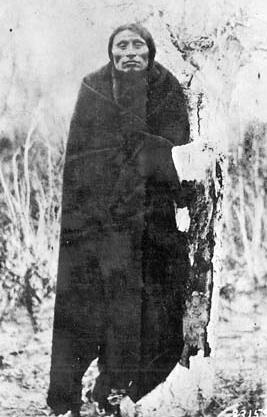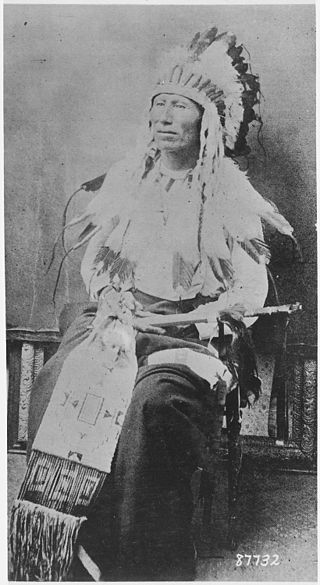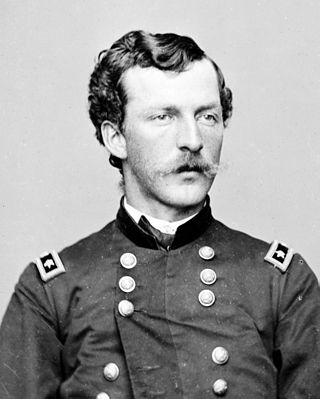Related Research Articles

The Lakota are a Native American people. Also known as the Teton Sioux, they are one of the three prominent subcultures of the Sioux people, with the Eastern Dakota (Santee) and Western Dakota (Wičhíyena). Their current lands are in North and South Dakota. They speak Lakȟótiyapi—the Lakota language, the westernmost of three closely related languages that belong to the Siouan language family.

The Sioux or Oceti Sakowin are groups of Native American tribes and First Nations people from the Great Plains of North America. The Sioux have two major linguistic divisions: the Dakota and Lakota peoples. Collectively, they are the Očhéthi Šakówiŋ, or "Seven Council Fires". The term "Sioux", an exonym from a French transcription ("Nadouessioux") of the Ojibwe term "Nadowessi", can refer to any ethnic group within the Great Sioux Nation or to any of the nation's many language dialects.

The Cheyenne are an Indigenous people of the Great Plains. Their Cheyenne language belongs to the Algonquian language family. Today, the Cheyenne people are split into two federally recognized nations: the Southern Cheyenne, who are enrolled in the Cheyenne and Arapaho Tribes in Oklahoma, and the Northern Cheyenne, who are enrolled in the Northern Cheyenne Tribe of the Northern Cheyenne Indian Reservation in Montana.

Sitting Bull was a Hunkpapa Lakota leader who led his people during years of resistance against United States government policies. Sitting Bull was killed by Indian agency police on the Standing Rock Indian Reservation during an attempt to arrest him at a time when authorities feared that he would join the Ghost Dance movement.

The Ghost Dance is a ceremony incorporated into numerous Native American belief systems. According to the teachings of the Northern Paiute spiritual leader Wovoka, proper practice of the dance would reunite the living with spirits of the dead, bring the spirits to fight on their behalf, end American Westward expansion, and bring peace, prosperity, and unity to Native American peoples throughout the region.

The Wounded Knee Massacre, also known as the Battle of Wounded Knee, was the deadliest mass shooting in American history, involving nearly three hundred Lakota people shot and killed by soldiers of the United States Army. The massacre, part of what the U.S. military called the Pine Ridge Campaign, occurred on December 29, 1890, near Wounded Knee Creek on the Lakota Pine Ridge Indian Reservation in South Dakota, following a botched attempt to disarm the Lakota camp. The previous day, a detachment of the U.S. 7th Cavalry Regiment commanded by Major Samuel M. Whitside approached Spotted Elk's band of Miniconjou Lakota and 38 Hunkpapa Lakota near Porcupine Butte and escorted them five miles westward to Wounded Knee Creek, where they made camp. The remainder of the 7th Cavalry Regiment, led by Colonel James W. Forsyth, arrived and surrounded the encampment. The regiment was supported by a battery of four Hotchkiss mountain guns. The Army was catering to the anxiety of settlers who called the conflict the Messiah War and were worried the Ghost Dance signified a potentially dangerous Sioux resurgence. Historian Jeffrey Ostler wrote in 2004, "Wounded Knee was not made up of a series of discrete unconnected events. Instead, from the disarming to the burial of the dead, it consisted of a series of acts held together by an underlying logic of racist domination."

Crazy Horse was a Lakota war leader of the Oglala band in the 19th century. He took up arms against the United States federal government to fight against encroachment by White American settlers on Native American territory and to preserve the traditional way of life of the Lakota people. His participation in several famous battles of the Black Hills War on the northern Great Plains, among them the Fetterman Fight in 1866, in which he acted as a decoy, and the Battle of the Little Bighorn in 1876, in which he led a war party to victory, earned him great respect from both his enemies and his own people.

Little Wolf was a Northern Só'taeo'o Chief and Sweet Medicine Chief of the Northern Cheyenne. He was known as a great military tactician and led a dramatic escape from confinement in Oklahoma back to the Northern Cheyenne homeland in 1878, known as the Northern Cheyenne Exodus.

The Sioux Wars were a series of conflicts between the United States and various subgroups of the Sioux people which occurred in the later half of the 19th century. The earliest conflict came in 1854 when a fight broke out at Fort Laramie in Wyoming, when Sioux warriors killed 31 American soldiers in the Grattan Massacre, and the final came in 1890 during the Ghost Dance War.

Morning Star (1810–1883) was a great chief of the Northern Cheyenne people and headchief of the Notameohmésêhese band on the northern Great Plains during the 19th century. He was noted for his active resistance to westward expansion and the United States federal government. It is due to the courage and determination of Morning Star and other leaders that the Northern Cheyenne still possess a homeland in their traditional country in present-day Montana.

Spotted Tail was a Sichangu Lakota tribal chief. Famed as a great warrior since his youth, warring on Ute, Pawnee and Absaroke (“Crow”), and having taken a leading part in the Grattan Massacre, he led his warriors in the Colorado and Platte River uprising after the massacre performed by John M. Chivington's Colorado Volunteers of the peaceful Cheyenne and Arapaho camping on Sand Creek, but declined to participate in Red Cloud's War.

The Miniconjou are a Native American people constituting a subdivision of the Lakota people, who formerly inhabited an area in western present-day South Dakota from the Black Hills in to the Platte River. The contemporary population lives mostly in west-central South Dakota. Perhaps the most famous Miniconjou chief was Touch the Clouds.

The Battle of Wolf Mountain was fought on January 8, 1877, by soldiers of the United States Army against Lakota Sioux and Northern Cheyenne warriors during the Great Sioux War of 1876. The battle was fought in southern Montana Territory, about four miles southwest of modern-day Birney, Montana, along the Tongue River.
Bear's Rib was a Húŋkpapȟa Lakota chief from the late 19th century who advocated for peace with the United States.

Moving Robe Woman, also known as Mary Crawler, Her Eagle Robe, She Walks With Her Shawl, Walking Blanket Woman, Moves Robe Woman, Walks With Her Robe and Tashenamani was a Hunkpapa Sioux woman who fought against General George Custer during the Battle of Little Big Horn to avenge her brother, One Hawk, who had been killed.

Touch the Clouds was a chief of the Minneconjou Teton Lakota known for his bravery and skill in battle, physical strength and diplomacy in counsel. The youngest son of Lone Horn, he was brother to Spotted Elk, Frog, and Roman Nose. There is evidence suggesting that he was a cousin to Crazy Horse.

The Red Cloud Agency was an Indian agency for the Oglala Lakota as well as the Northern Cheyenne and Arapaho, from 1871 to 1878. It was located at three different sites in Wyoming Territory and Nebraska before being moved to South Dakota. It was then renamed the Pine Ridge Reservation.

The Great Sioux War of 1876, also known as the Black Hills War, was a series of battles and negotiations that occurred in 1876 and 1877 in an alliance of Lakota Sioux and Northern Cheyenne against the United States. The cause of the war was the desire of the US government to obtain ownership of the Black Hills. Gold had been discovered in the Black Hills, settlers began to encroach onto Native American lands, and the Sioux and the Cheyenne refused to cede ownership. Traditionally, American military and historians place the Lakota at the center of the story, especially because of their numbers, but some Native Americans believe the Cheyenne were the primary target of the American campaign.

Spotted Elk, was a chief of the Miniconjou, Lakota Sioux. He was a son of Miniconjou chief Lone Horn and became a chief upon his father's death. He was a highly renowned chief with skills in war and negotiations. A United States Army soldier, at Fort Bennett, coined the nickname Big Foot – not to be confused with Oglala Big Foot.

The Battle of Little Muddy Creek, also known as the Lame Deer Fight, was fought on May 7–8, 1877, by United States soldiers and scouts against a village of Miniconjou Lakota and Northern Cheyenne. The battle occurred near Little Muddy Creek in Montana Territory, near present-day Lame Deer, Rosebud County.
References
- 1 2 Anderson, Harry (1956). "An Investigation of the Early Bands of the Saone Group of Teton Sioux". Journal of the Washington Academy of Sciences. 46 (3): 88. JSTOR 24533716 – via JSTOR.
- ↑ Waggoner, Josephine (2014). Witness: a Hunkpapha historian's Strong-Heart song of the Lakotas. University of Nebraska Press. p. 51,372,671n1.
- ↑ Miles, Nelson (1992). Personal recollections and observations of General Nelson A. Miles, embracing a brief view of the Civil War. Vol. 1. University of Nebraska Press. pp. 248–251. ISBN 9780803281806.